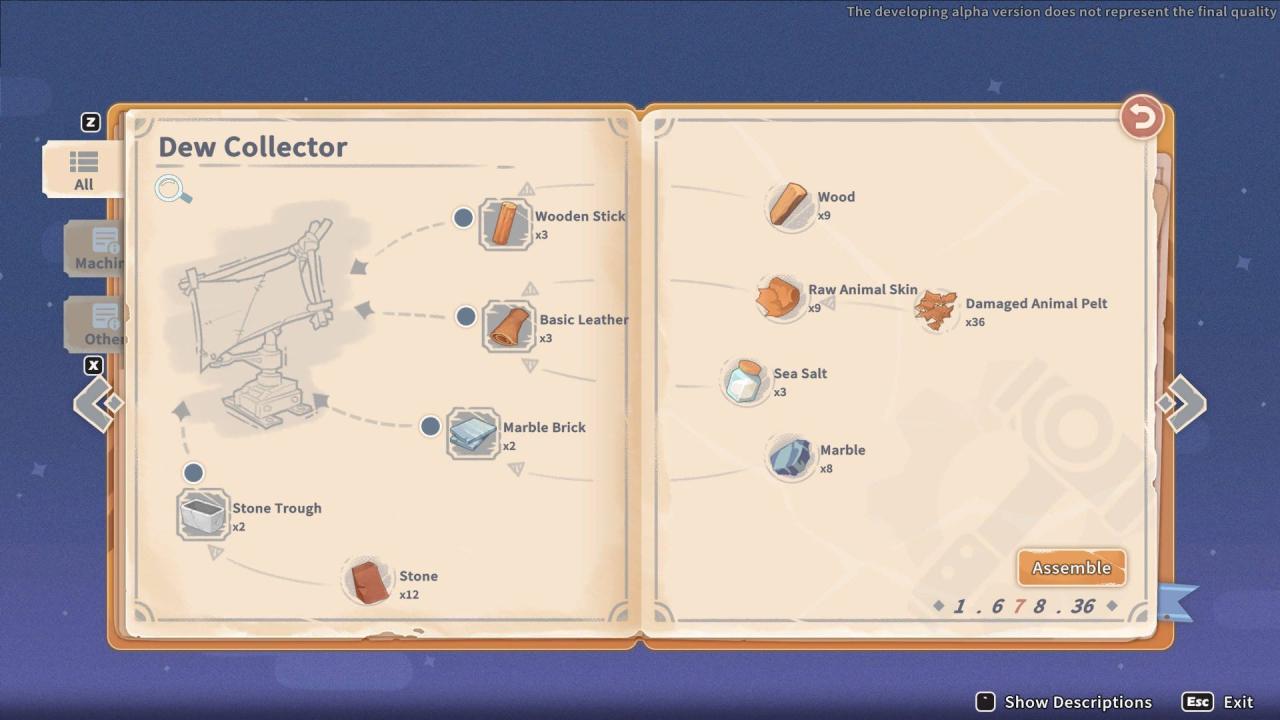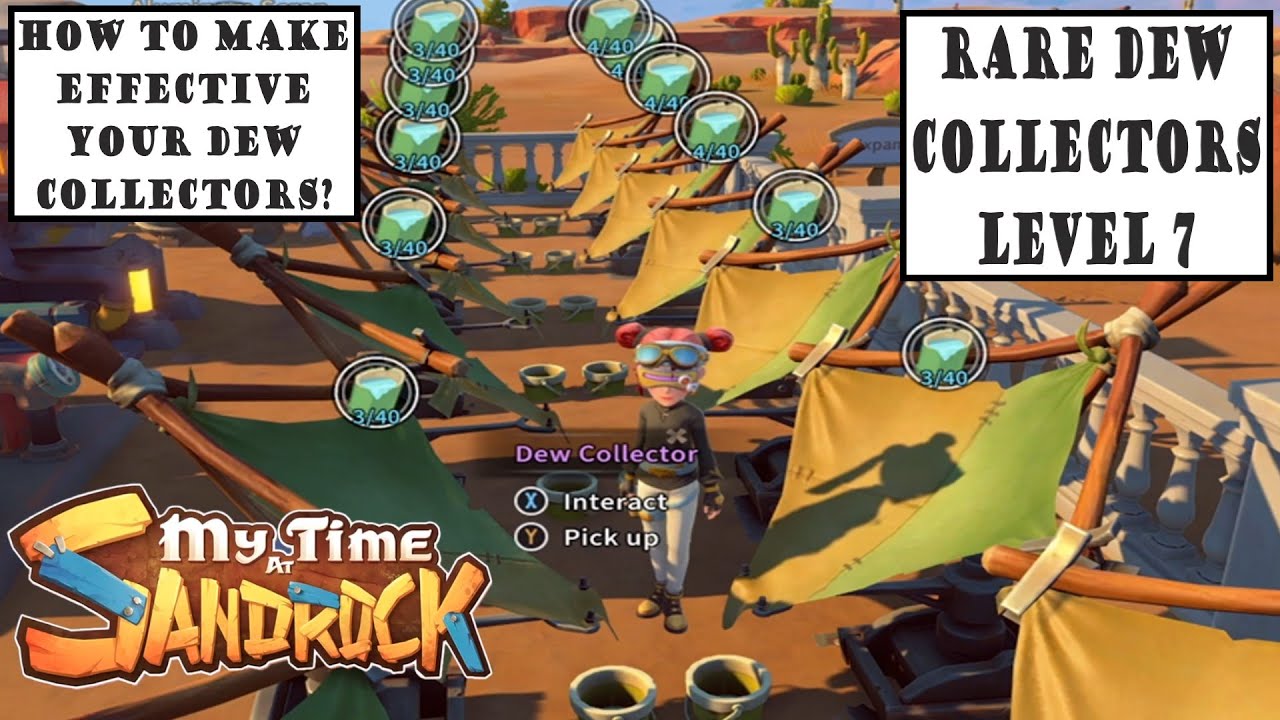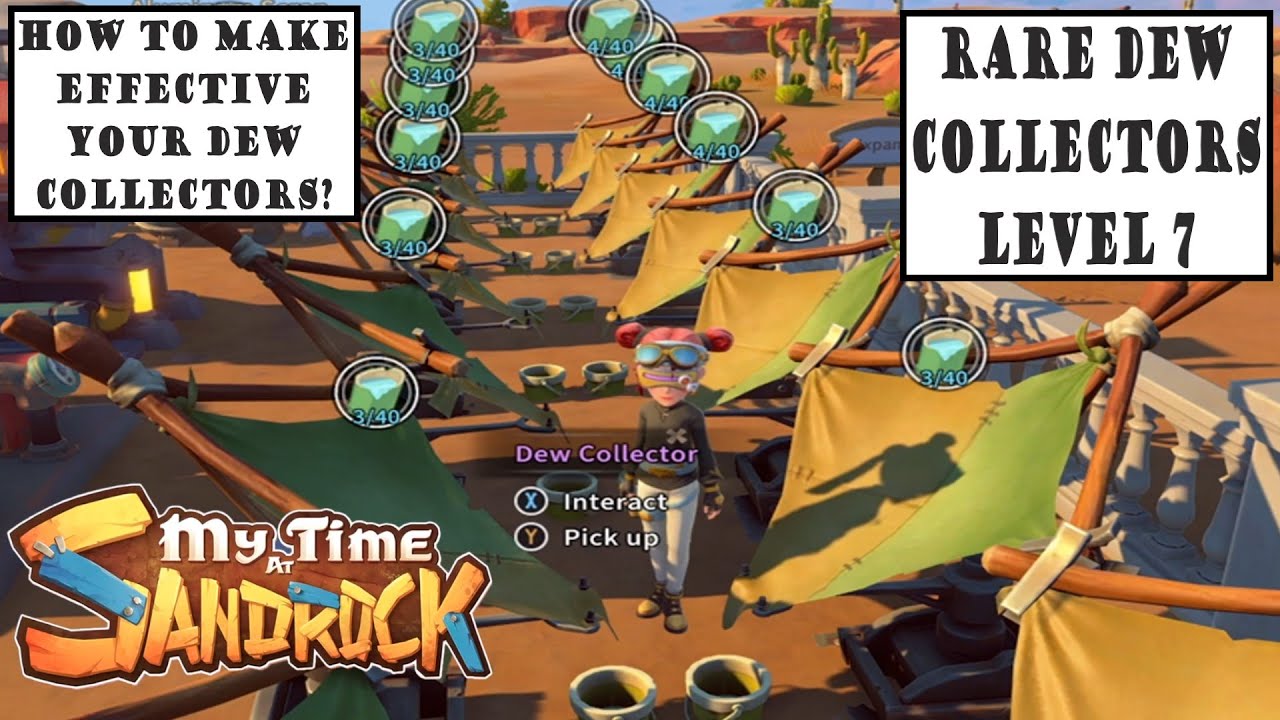My Time at Sandrock Dew Collector: A Comprehensive Guide to Water Production delves into the intricacies of water collection in the captivating world of My Time at Sandrock, providing players with the knowledge and strategies to optimize their water management systems.
In this guide, we will explore the different types of dew collectors available, their advantages and disadvantages, and the optimal placement and maintenance techniques to ensure maximum water production. We will also discuss how dew collectors can be integrated with other systems in the game and how upgrading and customization can further enhance their effectiveness.
Additionally, we will compare dew collectors to other water sources and provide troubleshooting tips for common issues.
Introduction
In My Time at Sandrock, the dew collector serves as a crucial component for the player’s survival and progress.
It is an indispensable tool for gathering water, a scarce resource in the arid desert environment of Sandrock. The collected water is vital for various purposes, including hydration, crafting, and irrigation, enabling the player to establish and sustain their workshop and community.
Significance to the Player’s Progress, My time at sandrock dew collector
- Water Source:The dew collector provides a reliable source of water, especially during the early stages of the game when water is scarce. This water can be used for drinking, cooking, and other essential activities.
- Crafting:Water is an essential ingredient in many crafting recipes, such as medicine, tools, and building materials. The dew collector ensures a steady supply of water for crafting, allowing the player to progress in their workshop and contribute to the development of Sandrock.
- Irrigation:Water is crucial for growing crops and plants in the desert environment. The dew collector provides water for irrigation, enabling the player to establish a sustainable food source and contribute to the town’s food supply.
Types of Dew Collectors
In the game Sandrock Dew Collector, players can construct various types of dew collectors to gather water from the morning dew. Each type of dew collector has its own advantages and disadvantages, making it suitable for different situations.
Basic Dew Collector
- Advantages:Simple and inexpensive to construct. Can be placed on any surface.
- Disadvantages:Low water yield compared to other types.
Advanced Dew Collector
- Advantages:Higher water yield than the Basic Dew Collector. Can be upgraded to further increase yield.
- Disadvantages:More expensive to construct. Requires a flat surface to be placed on.
Industrial Dew Collector
- Advantages:Highest water yield among all types. Can be automated to collect water without player input.
- Disadvantages:Most expensive to construct. Requires a large amount of space to be placed on.
Choosing the Right Dew Collector
The choice of dew collector depends on the player’s individual needs and resources. For players who are just starting out, the Basic Dew Collector is a good option due to its low cost and ease of construction. As players progress in the game and have more resources available, they can upgrade to the Advanced Dew Collector or Industrial Dew Collector for increased water yield.
Placement and Maintenance: My Time At Sandrock Dew Collector

Effective placement and regular maintenance are crucial for optimizing dew collector performance. Proper placement ensures maximum dew collection, while regular maintenance prevents deterioration and ensures efficient operation.
Placement
When placing dew collectors, consider the following factors:
- Orientation:Position collectors facing the prevailing wind direction to maximize airflow and dew condensation.
- Elevation:Install collectors at an elevated position, as higher altitudes generally experience higher humidity levels.
- Ground cover:Remove vegetation and obstacles around the collectors to prevent shading and promote air circulation.
- Spacing:Ensure sufficient spacing between collectors to allow for adequate airflow and prevent dew from pooling.
Maintenance
Regular maintenance is essential to keep dew collectors functioning optimally:
- Cleaning:Regularly clean the collection surfaces to remove dirt, dust, and debris that can impede dew formation.
- Inspection:Periodically inspect the collectors for any damage or leaks, and repair them promptly to prevent further deterioration.
- Repainting:If the collectors are painted, repaint them as needed to protect them from corrosion and maintain their reflective properties.
Water Production

Dew collectors harness the natural process of condensation to generate water. During nighttime, when temperatures drop, water vapor in the air condenses on the cool surface of the dew collector. As the water droplets accumulate, they trickle down into a collection container.
Factors Affecting Water Production
Several factors influence the amount of water produced by a dew collector:
- Relative humidity:Higher relative humidity indicates more water vapor in the air, leading to increased water production.
- Temperature:Lower temperatures enhance condensation, resulting in greater water yield.
- Wind speed:Wind helps disperse water vapor, reducing condensation and water production.
- Surface area:Larger surface areas provide more space for condensation, increasing water yield.
- Material:The material of the dew collector, such as metal or plastic, affects its thermal conductivity and condensation efficiency.
Integration with Other Systems
Integrating dew collectors into other systems within the game, such as water storage tanks, can provide significant benefits for water management.
One advantage of integrating dew collectors with water storage tanks is the ability to store excess water produced during periods of high dew point for later use. This stored water can be utilized during times of low dew point or drought conditions, ensuring a reliable water supply.
Benefits of Integrating Dew Collectors into a Larger Water Management System
- Increased Water Storage Capacity:Dew collectors can supplement the water storage capacity of tanks, providing a larger reserve of water for various purposes.
- Improved Water Security:Integrating dew collectors into a water management system enhances water security by diversifying water sources and reducing reliance on a single source.
- Enhanced Water Quality:Dew collected from the atmosphere is generally free of contaminants, making it a reliable source of clean water for drinking, irrigation, or other uses.
Upgrading and Customization
Dew collectors can be upgraded and customized to enhance their performance and functionality. Upgrading typically involves adding or replacing components to improve the efficiency of water collection, while customization involves modifying the design or configuration to meet specific needs.
Benefits of Upgrading and Customizing
- Increased Water Production:Upgrading with larger collection surfaces, more efficient condensation plates, and optimized airflow can significantly increase water yield.
- Improved Durability:Using corrosion-resistant materials, reinforced frames, and weather-resistant coatings can extend the lifespan of dew collectors in harsh environments.
- Enhanced Functionality:Adding features like sensors, controllers, and remote monitoring systems allows for automated operation and real-time data collection.
- Tailored Design:Customization enables dew collectors to be adapted to specific site conditions, such as orientation, elevation, and available space.
- Reduced Maintenance:Upgrading with self-cleaning mechanisms, anti-fouling coatings, and automated monitoring can minimize maintenance requirements.
Troubleshooting
Maintaining dew collectors involves resolving common issues that may arise, such as insufficient water production or maintenance challenges. This section provides troubleshooting tips to address these problems effectively.
Water Production Issues
- Low Water Production:Inspect the collector’s surface for any dirt, debris, or obstructions that may impede dew formation. Clean the surface regularly to ensure optimal condensation.
- Uneven Water Distribution:Check if the collector is properly leveled. Uneven surfaces can result in uneven water collection.
- Low Ambient Humidity:Dew formation is influenced by ambient humidity. In areas with low humidity, consider using a humidifier to increase moisture levels around the collector.
Maintenance Issues
- Corrosion:Inspect the collector for signs of corrosion, especially if it is made of metal. Apply protective coatings or replace corroded components to prevent further damage.
- Clogging:Regularly clean the collection reservoir and pipes to remove any sediment or debris that may accumulate over time.
- Structural Damage:Check for any cracks, dents, or other damage to the collector’s structure. Repair or replace damaged components promptly to maintain its functionality.
Comparison to Other Water Sources

Dew collectors offer unique advantages and disadvantages compared to other water sources in the game.Dew collectors are a passive water source, meaning they do not require any active effort or energy to collect water. They are also relatively inexpensive to build and maintain.
However, dew collectors are only effective in areas with high humidity and low temperatures. They also produce a relatively small amount of water compared to other water sources.Other water sources in the game include:
Wells
Wells are a reliable source of water, but they can be expensive to build and maintain. They also require a source of power to pump water.
Rainwater collectors
Rainwater collectors are a good option for areas with regular rainfall. They are relatively inexpensive to build and maintain, but they can only collect water when it is raining.
Desalinators
Desalinators can produce water from saltwater, but they are expensive to build and operate. They also require a source of energy.The best water source for your needs will depend on your specific circumstances. If you live in an area with high humidity and low temperatures, a dew collector may be a good option.
If you live in an area with regular rainfall, a rainwater collector may be a good option. If you live in an area with saltwater, a desalinator may be your only option.
Summary
Whether you are a seasoned player looking to refine your water management strategies or a newcomer seeking a comprehensive understanding of dew collectors, this guide will empower you with the knowledge and insights to maximize your water production and thrive in the arid landscapes of My Time at Sandrock.
Question & Answer Hub
What is the purpose of a dew collector in My Time at Sandrock?
Dew collectors are used to collect water from the air, providing a reliable source of water in the arid environments of My Time at Sandrock.
What are the different types of dew collectors available?
There are three types of dew collectors in the game: Basic Dew Collector, Improved Dew Collector, and Advanced Dew Collector. Each type has its own advantages and disadvantages in terms of water production, cost, and durability.
How do I place dew collectors effectively?
Dew collectors should be placed in areas with high humidity and low wind speeds, such as near bodies of water or in sheltered areas. Avoid placing them in direct sunlight, as this can reduce water production.

